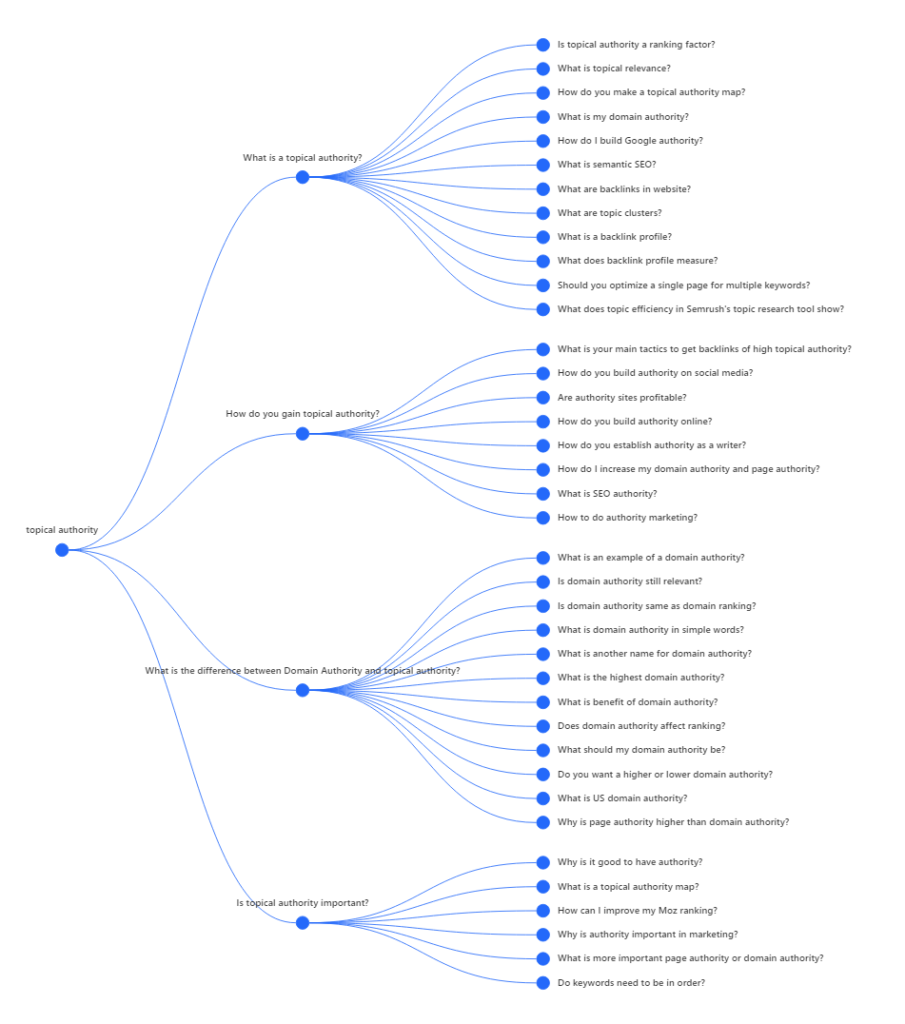The lead post in this series is Mastering Topical Authority: A Comprehensive Guide to Boost Your SEO.
The very terse answer is that topical maps are content planning tools.
They are visual representations of a topic cluster or topic network.
Jump ahead to:
What formats do topical maps take?
Often they’re represented as hierarchies with topics, subtopics, sub-subtopics, etc.
However this leaves out “cross connections” which make sense to help readers jump or link from concept to concept.
So it’s important to not create links between blog posts that EXACTLY mirror the connections in your topical maps. But rather to create links that best help your readers.
Some examples of topical maps
I think the best way to understand is to generate one.
I like AlsoAsked.com as it builds topical maps of search queries (things people “also asked” for), and generates an easy to read format.
Below is a topical map I generated at AlsoAsked.com to help me with this series of blog posts.

What are the key elements of a topical map?
Main topic, subtopics, maybe sub-subtopics, keyword phrases, interconnections (linkages that will becomes actual links between blog posts), and what are sometimes called “content assets”, which means articles, blog posts, infographics (if they’re good), etc.
How do you use a topical map?
It’s a content planning tool.
A topical map is a list of topics and subtopics grouped in ways that you think make sense.
Sometimes it helps you see that an existing blog post should be rewritten as two or maybe three separate blog posts.
And it definitely helps you identify topics for future blog posts. The list of future blog posts is sometimes called your “content gap”.
But it also helps you generate ideas. As we think of more relevant topics and subtopics, the use of a topical map often helps us think of even more.
How do you create a topical map?
As I said earlier, I like AlsoAsked, but there is also AnswerThePublic, and of course you can always just create a Google Sheets document and start entering things you think are interesting and relevant.
A few case studies
I searched for case studies to share, instead found a bunch of “What are, how to” type articles. But these ones look really good (even the super short one), so I’m sharing them.
They say what I’m saying in this post, but in some cases in more depth.
I suggest you at least click through and scan then. There’s good stuff in all of them.
- Builder Society Forum
- inLinks
- Visual Paradigm: the super short one
- Similarweb
In closing
As SEO is now dominated by the use of the framework called topical authority, and one thing we can do to benefit both readers and search engine spiders is create sets of posts in topic clusters, topical maps have become not just a standard content planning tool, but one that’s become rather essential.
I for one no longer think in terms of “blog posts” but rather in terms of “topic clusters”.
Which need to be planned out, and executed upon.
